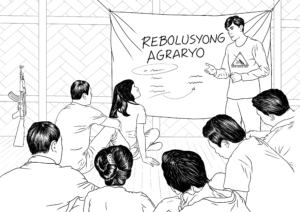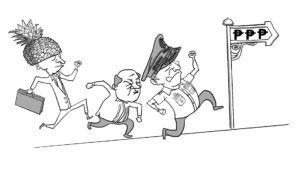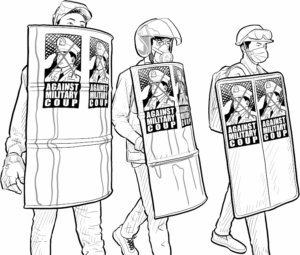Bankruptcy among abaca farmers in Bicol


Abaca farmers in Catanduanes have already been facing bankruptcy even before the Covid-19 pandemic. Fifty kilos of abaca are sold for only ₱3,000 which is relatively lower than the ₱5,000-cost of production shouldered by farmers, including rent to landlords.
Overall, at least 200,000 peasant families across the country plant abaca. The crop line covers 180,302 hectares of farmlands. Abaca production is generally backward, small-scale and unsystematic. There is no significant improvement in the production equipment of farmers who typically do manual labor from planting to stripping to produce abaca fiber.
Farmers commonly wait up to two years to benefit from and harvest their abaca. They wait for another three months before abaca plants grow again. With 20-30 abacas, farmers are able to harvest 20 kilos of produce. These are harvested in 2-3 days by at least 2-3 people.
According to the Philippine Fiber Industry Development Authority, the province of Catanduanes produces 30% of the abaca supply in the country. The Bicol region has the largest share in the local abaca production.
Based on a research by the Instructor’s Bureau of the Communist Party of the Philippines in Bicol, the average pre-pandemic price of dried abaca in Catanduanes was ₱60/kilo. Prices vary depending on the quality of dried abaca. Abaca that is less white is usually bought cheaper. To be able to sell 50 kilos of dried abaca, farmers shoulder up to ₱4,210 in production costs.
Part of the costs covers ₱600 for clearing and cutting abaca plants; ₱2,400 salary for two farm workers employed to strip abacas; and ₱300 for drying.
In transporting the produce from the farm to the road, farmers spend ₱1 per kilo of abaca. The transportation from the barrio the market costs ₱30 per bundle of abaca fiber. For three days, approximately ₱450 is spent for food expenses.
Up to 25% is deducted from the farmers’ net income for land rent, leaving them with a loss of ₱1,960 in the end.
Exceptional Filipino product
The Philippines is among the very few countries across the world which supply abaca. Abaca produced in the Philippines is internationally known as the Manila Hemp. Aside from the Bicol region, other areas including Mindoro in Luzon; Leyte, Samar, Negros Oriental, Iloilo and Aklan in Visayas, and all provinces in Mindanao produce abaca. Many of those who produce these are small and poor farmers and indigenous peoples.
The Philippines produces 87% of the global supply of abaca. In 2019, the Philippines exported $156 million or ₱7.8 billion ($1=₱50) in abaca products. The average value of abaca exported by the country annually is $97.1 million, 12.6% of which is raw abaca fiber.
In 2020, the total local production of abaca fell by 2.17% from 72,300 metric tons in 2019 to 70,770 metric tons. This was primarily caused by transportation restrictions during the Covid-19 pandemic and successive typhoons which hit the country during the last quarter of 2020.
Data by the Food and Agriculture Organizaton of the United Nations indicate that the average price of exported abaca fiber in 2016 was $1.99-$2.35/kilo (₱99.32-₱117.5). This is higher by ₱30 than the price at which traders buy the produce of abaca farmers.
In sum, exporters gain about ₱4,966-₱5,875 per 50 kilos of abaca fiber, 60% more than the income of farmers which is only ₱3,000. This is despite the fact that production costs are shouldered solely by farmers, and that no value is added to the raw fibers exported to other countries.
Around 57% of abaca fibers produced locally are processed for the production of tea bags and other paper products. Each tea bag costs ₱1.5-₱2 each.
Abaca is also used for the production of paper bills, clothes and others. Last year, abaca was promoted as a good material for producing face masks.












